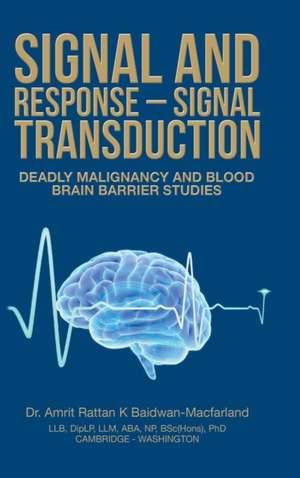Signal and Response - Signal Transduction
Autor Amrit Rattan K Baidwan-Macfarlanden Limba Engleză Hardback – 30 mar 2019
| Toate formatele și edițiile | Preț | Express |
|---|---|---|
| Paperback (1) | 3023.15 lei 3-5 săpt. | |
| Authorhouse UK – 30 mar 2019 | 3023.15 lei 3-5 săpt. | |
| Hardback (1) | 3038.83 lei 3-5 săpt. | |
| Authorhouse UK – 30 mar 2019 | 3038.83 lei 3-5 săpt. |
Preț: 3038.83 lei
Preț vechi: 3198.76 lei
-5% Nou
Puncte Express: 4558
Preț estimativ în valută:
581.55€ • 631.48$ • 488.50£
581.55€ • 631.48$ • 488.50£
Carte disponibilă
Livrare economică 01-15 aprilie
Preluare comenzi: 021 569.72.76
Specificații
ISBN-13: 9781728386867
ISBN-10: 1728386861
Pagini: 302
Dimensiuni: 157 x 235 x 22 mm
Greutate: 0.64 kg
Editura: Authorhouse UK
ISBN-10: 1728386861
Pagini: 302
Dimensiuni: 157 x 235 x 22 mm
Greutate: 0.64 kg
Editura: Authorhouse UK
